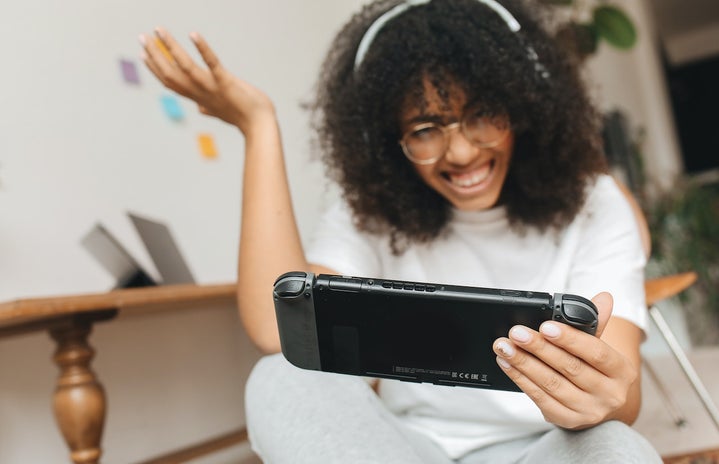Whether or not you’re one to engage in video games actively, there’s a pretty high chance that you’ve played one a handful of times. For a long time, video games have been a popular form of entertainment, enjoyed by people ranging of all ages and genders. However, despite the growing number of women who play video games, there remains a noticeable disparity in the representation of females. While men are more often than not depicted as powerful and heroic figures, women are often boiled down to secondary or side roles, and/or are stereotyped.
One of the most significant issues with the representation of women in video games is the lack of female protagonists. A majority of video games feature male protagonists who are strong, brave, and heroic. In contrast, female characters are often shown as supporting characters. This includes as love interests, sidekicks, or just plain background characters that play no integral part in the main objective whatsoever.
A study conducted by Michigan State University in 1998 found that only 15% of games had a female playing a major role. This lack of representation can make it difficult for women to identify with the characters they see on screen. It can be argued that the issue has lessened compared to the 1990s, but this is still a prevalent issue. Games that fail to accurately depict women include Soulcalibur VI and a few of the installments of the Assassin’s Creed series, which are as recent as 2018.
When female characters do appear in video games, there is the issue of them being overly sexualized. Female characters are frequently depicted in revealing clothing or in provocative poses. This reinforces the concept of dehumanizing – that they don’t serve a purpose other than to be admired but rather fully flushes out realistic female characters with depth.
An example of this would be from the Mortal Kombat series, where character designs, fighting styles and overall presentation of female characters contrast men greatly. Though it is important to note that lore exists for each and every character in the most recent installments, the general portrayal remains to be an issue.
Here’s the ongoing problem of gender stereotypes. Women are often portrayed as weak, emotional, and in need of protection. This can reinforce harmful stereotypes about women that have no basis in reality. When women are portrayed as strong or powerful, more often than not, they’re given masculine traits or characteristics rather than being allowed to be strong in their own right.
In recent years, there have been efforts to improve the representation of women in video games. Some game developers have made a conscious effort to create more female protagonists and to create more nuanced and diverse female characters. Games such as the Portal series, Tomb Raider, Resident Evil, and NieR: Automata have some well-developed and fully-fleshed female protagonists and main cast characters.
However, there is still a long way to go before women are fully represented in video games, along with a lot more minority groups. Particularly when it comes to the representation of LGBTQIA+ characters and storylines in video games, despite the significant progress made in other areas of diversity as of recent.
There have been some positive steps taken in recent years toward LGBTQIA+ representation in video games. Some games, such as Life is Strange and The Last of Us Part II, have received critical acclaim for their representation of LGBTQIA+ characters and storylines. Additionally, there are more indie games being created that feature LGBTQIA+ characters and storylines, as indie developers have more freedom to experiment and take risks. However, the industry still has a long way to go to achieve true representation and inclusivity.
Game developers and publishers need to make a concerted effort to ensure that their games are inclusive and representative of all players, regardless of their sexual orientation or gender identity. This includes creating more nuanced and diverse LGBTQIA+ characters, avoiding stereotypes and tokenization, and ensuring that their games are welcoming to all players.
For example, for games that allow the player to customize their own playable character, more often than not, the only options in terms of gender orientation are strictly limited to females or males. This can be seen in games from the Pokémon series. Even though other aspects, such as skin color, hair texture, and face or body types have admittedly improved over time, this problem still needs to be addressed.
Don’t get me wrong, there are a great number of devs who have crafted well-made games and content, while including representation not just for women, but for a variety of other groups altogether. Take Celeste or Night in The Woods, for example. Both are heavily story-driven and include characters who fall under LGBTQIA+. While the focus isn’t necessarily on these topics, it’s a natural integration into the content of a plot-focused story.
Our video games or well – media in general should, at a bare minimum, have realism in a way that actually reflects real life. With individuals with various backgrounds, characteristics, demographics, ethnicities and cultures. This not only helps in making a game have more of an immersion factor, but it also goes to connect with more people.
Ultimately, the representation of all gender orientations and alignments in video games is important because it shapes the way that women are perceived and treated both within the gaming community and in society at large. When people are portrayed as fully realized, complex characters, it can help to challenge harmful stereotypes and create a more inclusive and welcoming gaming community. By working to improve the representation of all gender identities, cultures, backgrounds and appearances, we can help to create a more equal and just space for everyone.
Are there any games that came to mind while reading this article? Reach out and let us know! Tag @HerCampusSJSU.


